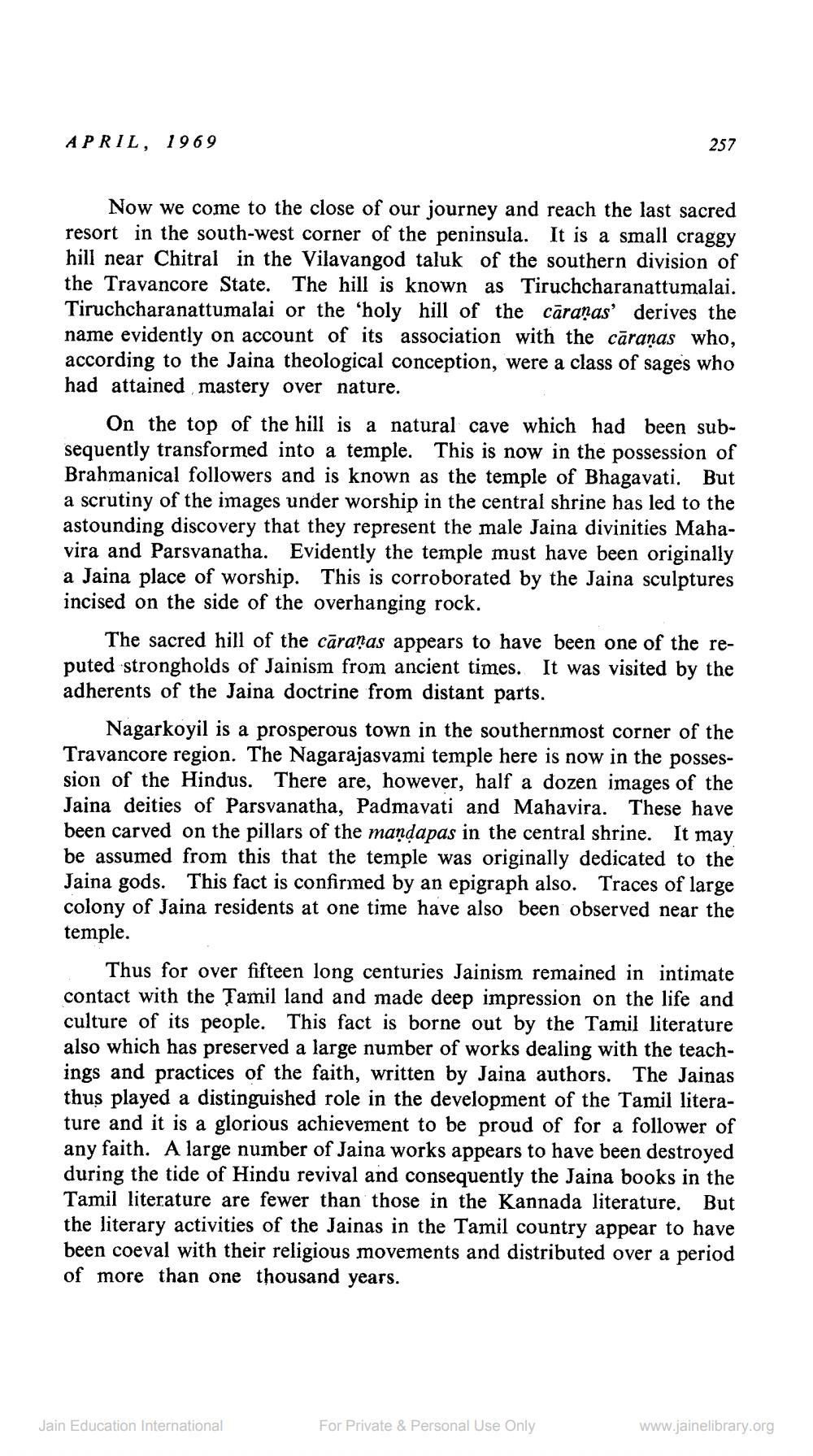________________
APRIL, 1969
Now we come to the close of our journey and reach the last sacred resort in the south-west corner of the peninsula. It is a small craggy hill near Chitral in the Vilavangod taluk of the southern division of the Travancore State. The hill is known as Tiruchcharanattumalai. Tiruchcharanattumalai or the 'holy hill of the caranas' derives the name evidently on account of its association with the caraṇas who, according to the Jaina theological conception, were a class of had attained mastery over nature.
sages who
257
On the top of the hill is a natural cave which had been subsequently transformed into a temple. This is now in the possession of Brahmanical followers and is known as the temple of Bhagavati. But a scrutiny of the images under worship in the central shrine has led to the astounding discovery that they represent the male Jaina divinities Mahavira and Parsvanatha. Evidently the temple must have been originally a Jaina place of worship. This is corroborated by the Jaina sculptures incised on the side of the overhanging rock.
The sacred hill of the caraṇas appears to have been one of the reputed strongholds of Jainism from ancient times. It was visited by the adherents of the Jaina doctrine from distant parts.
Nagarkoyil is a prosperous town in the southernmost corner of the Travancore region. The Nagarajasvami temple here is now in the possession of the Hindus. There are, however, half a dozen images of the Jaina deities of Parsvanatha, Padmavati and Mahavira. These have been carved on the pillars of the mandapas in the central shrine. It may be assumed from this that the temple was originally dedicated to the Jaina gods. This fact is confirmed by an epigraph also. Traces of large colony of Jaina residents at one time have also been observed near the temple.
Thus for over fifteen long centuries Jainism remained in intimate contact with the Tamil land and made deep impression on the life and culture of its people. This fact is borne out by the Tamil literature also which has preserved a large number of works dealing with the teachings and practices of the faith, written by Jaina authors. The Jainas thus played a distinguished role in the development of the Tamil literature and it is a glorious achievement to be proud of for a follower of any faith. A large number of Jaina works appears to have been destroyed during the tide of Hindu revival and consequently the Jaina books in the Tamil literature are fewer than those in the Kannada literature. But the literary activities of the Jainas in the Tamil country appear to have been coeval with their religious movements and distributed over a period of more than one thousand years.
Jain Education International
For Private & Personal Use Only
www.jainelibrary.org




